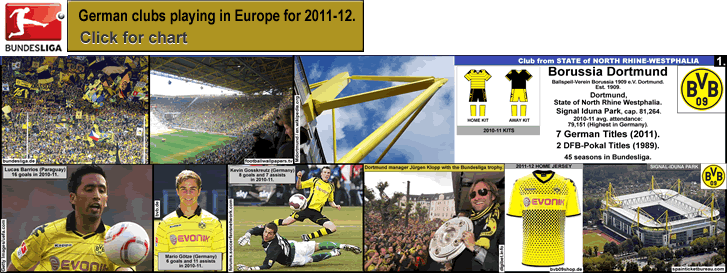…
The Midwest League is a Class A minor league baseball league. [Class A is four levels below Major League Baseball, with leagues classified as AAA, AA, and A-Advanced above it.] Despite its lower-minor-league status, the Midwest League as a whole outdraws 4 other leagues above it – the higher-placed leagues the Midwest League outdrew last season were the Mexican League, the Carolina League, the Southern League, and the California League. The Midwest League is one of 2 Class A leagues (the other being the South Atlantic League). The Midwest League now has 16 teams – its ranks were increased by two in the off-season, with the Bowling Green Hot Rods and the Lake County Captains both moving over from the South Atlantic League.
In 2010, the Midwest League averaged 3,787 per game. That made the Midwest League the fifth-highest-drawing minor league.
For the record, here are all the minor leagues’ average attendances for 2010 -
Average attendance of minor leagues in 2010…
International League (AAA) – 6,908 per game.
Pacific Coast League (AAA) – 6,120 per game.
Texas League (AA) – 5,264 per game.
Eastern League (AA) – 4,663 per game.
Midwest League (A) – 3,787 per game.
New York-Penn League (A-Short Season) – 3,490 per game.
South Atlantic League (A) – 3,306 per game.
Carolina League (A-Advanced) – 3,256 per game.
Mexican League (AAA) – 3,232 per game.
Southern League (AA) – 3,188 per game.
Northwest League (A-Short Season) – 2,920 per game.
California League (A-Advanced) – 2,237 per game.
Pioneer League (Rookie) – 2,158 per game.
Appalachian League (Rookie) – 865 per game.
[Arizona League, Gulf Coast League, Dominican Summer League and Venezuela Summer League attendances not available]
[Numbers from Baseball-Reference.com].
The Midwest League was established in 1947, as the Illinois League, a Class D minor league, with six teams from southern Illinois. [At the time, Class D was the lowest level of the minor league system, before re-organization in 1963, and would be equivalent to the Rookie League level of modern Organized Baseball (or the 6th level below MLB).] The six original teams in the Illinois League were from Belleville, Centralia, Marion, Mattoon, Mount Vernon, and West Frankfort (all in the southern half of the state of Illinois). Today, none of those locales have teams in the Midwest League (or any other minor league in Organized Baseball), although some of these franchises still exist, like, for example, the Mattoon, Illinois franchise, which moved to Keokuk, Iowa in 1958; then to Wisconsin Rapids, Wisconsin in 1963; then to Kenosha, Wisconsin in 1984 – before finally settling in Fort Wayne, Indiana in 1993.
The oldest current member of the Midwest League which has remained in the same location is the Clinton LumberKings, who were formed in 1954 as the Clinton Pirates. The Clinton ball club has had affiliations with a dozen MLB franchises, starting with the Pittsburgh Pirates (1954-58), and currently is affiliated with the Seattle Mariners (since 2009). The second-oldest ball club in the modern-day Midwest League which has never left its original location is the Quad Cities River Bandits, who were formed in 1960, as the Quad Cities Braves. [The term Quad Cities is the popularly-used name for the five-city metropolitan area of Davenport, Iowa/Bettendorf, Iowa/Rock Island, Illinois/Moline, Illinois/East Moline, Illinois - and which straddles the Mississippi River in southeastern Iowa/northwest Illinois.] The Quad Cities River Bandits have had affiliations with 7 MLB ball clubs, and are currently, since 2005, the fourth-highest minor league farm team of the nearby St. Louis Cardinals.
The third and fourth-oldest teams in the Midwest League which have remained in the same location are two Iowa-based ball clubs – the Burlington Bees and the Cedar Rapids Kernals. Both these teams joined the Midwest League in 1962 from the Three-I League [Illinois, Indiana, and Iowa League] which had just disbanded in January, 1962. Actually, in terms of actual ball club longevity regardless of league, these teams are the oldest in the current Midwest League because the present-day Burlington ball club was formed in 1947, and the present-day Cedar Rapids ball club was formed 2 years later in 1949. Burlington has been affiliated with 13 MLB franchises, but were Independent prior to joining the Midwest League in 1962, when they had a one-year affiliation with the Pittsburgh Pirates, followed by a 12-year affiliation with the Kansas City Athletics/Oakland Athletics. As of this season [2011], the Burlington Bees are back within the Oakland Athletics’ farm system. The Burlington Bees had the lowest average attendance in the Midwest League in 2010, drawing just 971 per game to their rather out-of-date ballpark. Granted, Burlington is a pretty small municipality that frankly has no business calling itself a “city” (as its Wikipedia page does), seeing as how it has a population of around 26,800 {2000 figure}. I don’t know what the situation is with the Bees, but it would not surprise me in the least if this team is the next Midwest League ball club to move to greener pastures. By comparison, the Cedar Rapids Kernals don’t have near the problems drawing fans that Burlington does, due to its size {~255,000 metro-area population in Cedar Rapids} and a relatively new ballpark (opened in 2002), but still, Cedar Rapids drew only 12th-best in the Midwest League in 2010, averaging 2,585 per game.
The fact is, aside from Kane County, all the best-drawing teams in the Midwest League are in the Eastern Division, which means teams from locations outside the original Iowa/Illinois/Wisconsin region of the Midwest League; and, including Kane County, all the best-drawing teams are from locations that the Midwest League expanded into in the last 20 years. In other words, the reason the Midwest League has such good attendance numbers in relation to its relatively lower-minor-league level is that, with a few exceptions (like Burlington and Clinton), the league and its franchises have opted to relocate to municipalities which offered a larger fan base, and in doing so, the teams were able to secure new stadiums in those locales. One example is the aforementioned Fort Wayne Tin Caps (the nickname is a Johnny Appleseed reference), who drew third-best in the league last season, pulling in 5,735 per game. Other examples can be seen in the Dayton Dragons, the Kane County Cougars, the West Michigan Whitecaps, the Lansing Lugnuts, the Lake Country Captains (located east of Cleveland), and the Great Lakes Loons (located in central Michigan). None of these teams existed 20 years ago, and the impressively-drawing Dayton Dragons are just 11 years old, while the Lake Country Captains and the Great Lakes Loons teams are just 9 and 7 years old, respectively. These teams have nice new ballparks and draw very well, all drawing over 4,000 per game last season.
The highest-drawing ball club in the Midwest League is the Dayton Dragons. Dayton drew 8,535 per game in 2010, which was the 5th-highest average attendance in all of minor league baseball last season (!). {See this list (from BallparkDigest.com) of all minor league teams’ attendances from 2010.} The Kane County Cougars, of Geneva, Illinois drew second-best in the Midwest League in 2010, with an average attendance of 6,244 per game. The Kane County Cougars are within the loosely-defined area known as Chicagoland, and are 34 miles west of the city center of Chicago.
As I have mentioned in earlier posts on minor leagues recently, a trend with minor league farm teams is for the parent-club Major League team to place one or more of their minor league teams relatively close to where the big league team plays – and no better example of this can be seen than in the Dayton Dragons’ case. Because Dayton is just 49 miles north of Cincinnati. The prevailing wisdom in the era that spanned from after World War II right up to the early 1990s was that minor league teams couldn’t survive when placed less than 60 miles or so from a Major League team. The few exceptions to this rule-of-thumb were with San Jose, California; with Toledo, Ohio; with Pawtucket (ie, Providence, Rhode Island); and with Reading, Pennsylvania – all four of which were/are less than 50 miles from San Francisco, Detroit, Boston and Philadelphia, respectively. Dayton, Ohio is a good example of how this thinking has changed. Dayton is a pretty large city {Dayton metro-area population is currently around 841,000}. But Dayton did not have a minor league baseball team for almost half a century! Between the years 1952 and 1999, there was no baseball team in Dayton {see this, from Baseball-Reference.com}. It’s impossible to prove whether the people who ran baseball back then were right about this “zone of exclusion”, as it were. Because back in the 1960s and the 1970s and the 1980s, it wasn’t so expensive to see Major League Baseball games, so the lesser prices that a theoretical minor league team would charge in a near-to-an-MLB-team market like Dayton might not make a difference to the average fan there. But these days, with the high cost of attending Major League Baseball games (especially when factoring in the price gouging that goes on with parking fees and the price of concessions in MLB venues), it makes economic sense for, say, a family of 4 from Dayton, Ohio, to not make that expensive trip to down the road to Cincinnati to see a Cincinnati Reds game, but stay right in Dayton, and see the Dayton Dragons, featuring some future Cincinnati Reds prospects. And all for about one-fourth of the cost, at least. With the case of the Kane County Cougars, well, despite the fact that the team is not affiliated with either of the Chicago MLB teams 35 miles or so to the east the Cougars still draw over 6,000 per game. The fact of the matter is that attending minor league baseball games is a fun, relaxing and very affordable recreational activity. And now in many more areas of the United States, people who live within easy driving distance of a Big League ball club have the option of going out to a ball game without spending an arm and a leg.
From the Midwest League page the of MiLB site, ‘History [of the Midwest League]‘.
Photo credits -
Bowling Green Hot Rods/Bowling Green Ballpark…photo from RaysProspects.com, here.
Dayton Dragons/Fifth Third Field 9Dayton)…Aerial image from Bing.com/maps/Bird’s Eye satellite view, here.
Fort Wayne Tin Caps/Parkview Field…photo from In.gov/visitindiana/blog, here.
Great Lakes Loons/Dow Diamond…photo from the Great Lakes Loons’ page at MiLB site, here.
Lake County Captains…Aerial image fron Bing.com/maps/Bird’s Eye satellite view, here.
Lansing lugnuts/Cooley Law School Stadium…Aerial image from Bing.com/maps/Bird’s Eye satellite view, here.
South Bend silver Hawks/Stanley Covaleski Regional Stadium…Aerial image from Bing.com/maps/Bird’s Eye satellite view, here.
West Michigan Whitecaps/Fifth Third Ballpark (Grand Rapids)…Aerial image from Bing.com/maps/Bird’s Eye satellite view, here.
Beloit Snappers/Harry C. Pohlman Field…Aerial image from Bing.com/maps/Bird’s Eye satellite view, here.
Burlington Bees/Community Field…Photo from LittleBallparks.com, here.
Cedar Rapids Kernals/Veteran’s Memorial Stadium…Aerial image from Bing.com/maps/Bird’s Eye satellite view, here.
Clinton LumberKings/Alliant Energy Field…Aerial photo by Michael J. Kearney, at en.wikipedia.org, here.
Kane County Cougars/Elfstrom Stadium…Aerial image from Bing.com/maps/Bird’s Eye satellite view, here.
Peoria Chiefs/O’Brien Field…Aerial image from Bing.com/maps/Bird’s Eye satellite view, here.
Quad Cities River Bandits/Modern Woodmen Park…Aerial image from Bing.com/maps/Bird’s Eye satellite view, here.
Wisconsin Timber Rattlers/Time Warner Cable Field at Fox Cities Stadium…Photo from this April, 2009 article at OnMilwaukee.com, by Andrew Wagner, ‘Deal with Brewers paying off for Timber Rattlers‘.
Thanks to the contributors to the pages at en.wikipedia.org, ‘Midwest League‘.
Thanks to David Kronheim at NumberTamer.com. Attendance figures from NumberTamer.com/ -Numbertamer.com’s Minor League Baseball – 2010 attendance analysis [pdf] (Note, league attendances begin on page 28 of the 60 page pdf.)







